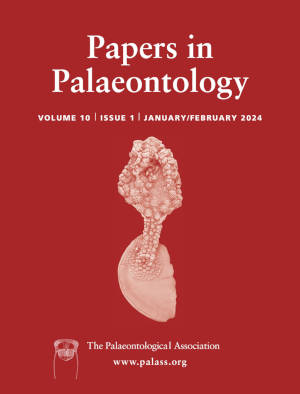Article: Ostracods from the Cretaceous–Palaeogene boundary at El Matuasto Section, Neuquén Basin, Argentina: taxonomy, palaeoecological and palaeobiogeographical inferences
Publication: Papers in Palaeontology
Volume:
10
Part:
2
Publication Date:
2024
Article number:
e1549
Author(s):
Daiane Ceolin, Marcos Antonio B. Santos Filho, Andrea Concheyro, and Gerson Fauth
DOI:
10.1002/spp2.1549
Abstract
Abstract This work presents a taxonomic, palaeoecological and palaeobiogeographical study of the ostracod fauna around the Cretaceous–Palaeogene boundary from the El Matuasto section, Neuquén Basin, Argentina. The analysis of 64 samples resulted in the recovery of 82 marine ostracod species, of which four are new: Hemiparacytheridea condilomata, Paramunseyella stictus, Hysterocythereis acuminata and Aleisocythereis? picnus. In addition, the genera Sapucariella, Monoceratina, Aracajuia, Microceratina and Pelecocythere are reported for the first time from the Neuquén Basin. Palaeoecological inferences indicate fluctuations in abundance and diversity, occurring alongside environmental change from an inner to medium shelf during the Maastrichtian and to an outer shelf in the Danian. The Maastrichtian fauna was less abundant than that in the Danian, which shows a rapid recovery after the Cretaceous–Palaeogene boundary. During the Danian, a small interval also shows a sudden decrease in abundance and diversity that could potentially be related to the Dan-C2 event. In addition, the described genera and species in this study suggest a strong palaeobiogeographical affinity with the Paraíba Basin, northeastern Brazil.
